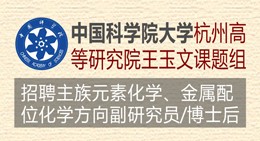当前位置:
X-MOL 学术
›
Environ. Sci. Technol.
›
论文详情
Our official English website, www.x-mol.net, welcomes your feedback! (Note: you will need to create a separate account there.)
Atmospheric Oxidation Capacity Elevated during 2020 Spring Lockdown in Chengdu, China: Lessons for Future Secondary Pollution Control
Environmental Science & Technology ( IF 11.4 ) Pub Date : 2024-05-11 , DOI: 10.1021/acs.est.3c08761 Zhaofeng Tan 1 , Miao Feng 2 , Hefan Liu 2 , Yina Luo 2 , Wei Li 2 , Danlin Song 2 , Qinwen Tan 2 , Xuefei Ma 1 , Keding Lu 1 , Yuanhang Zhang 1
Environmental Science & Technology ( IF 11.4 ) Pub Date : 2024-05-11 , DOI: 10.1021/acs.est.3c08761 Zhaofeng Tan 1 , Miao Feng 2 , Hefan Liu 2 , Yina Luo 2 , Wei Li 2 , Danlin Song 2 , Qinwen Tan 2 , Xuefei Ma 1 , Keding Lu 1 , Yuanhang Zhang 1
Affiliation

|
This study presents the measurement of photochemical precursors during the lockdown period from January 23, 2020, to March 14, 2020, in Chengdu in response to the coronavirus (COVID-19) pandemic. To derive the lockdown impact on air quality, the observations are compared to the equivalent periods in the last 2 years. An observation-based model is used to investigate the atmospheric oxidation capacity change during lockdown. OH, HO2, and RO2 concentrations are simulated, which are elevated by 42, 220, and 277%, respectively, during the lockdown period, mainly due to the reduction in nitrogen oxides (NOx). However, the radical turnover rates, i.e., OH oxidation rate L(OH) and local ozone production rate P(O3), which determine the secondary intermediates formation and O3 formation, only increase by 24 and 48%, respectively. Therefore, the oxidation capacity increases slightly during lockdown, which is partly attributed to unchanged alkene concentrations. During the lockdown, alkene ozonolysis seems to be a significant radical primary source due to the elevated O3 concentrations. This unique data set during the lockdown period highlights the importance of controlling alkene emission to mitigate secondary pollution formation in Chengdu and may also be applicable in other regions of China given an expected NOx reduction due to the rapid transformation to electrified fleets in the future.
更新日期:2024-05-11































 京公网安备 11010802027423号
京公网安备 11010802027423号